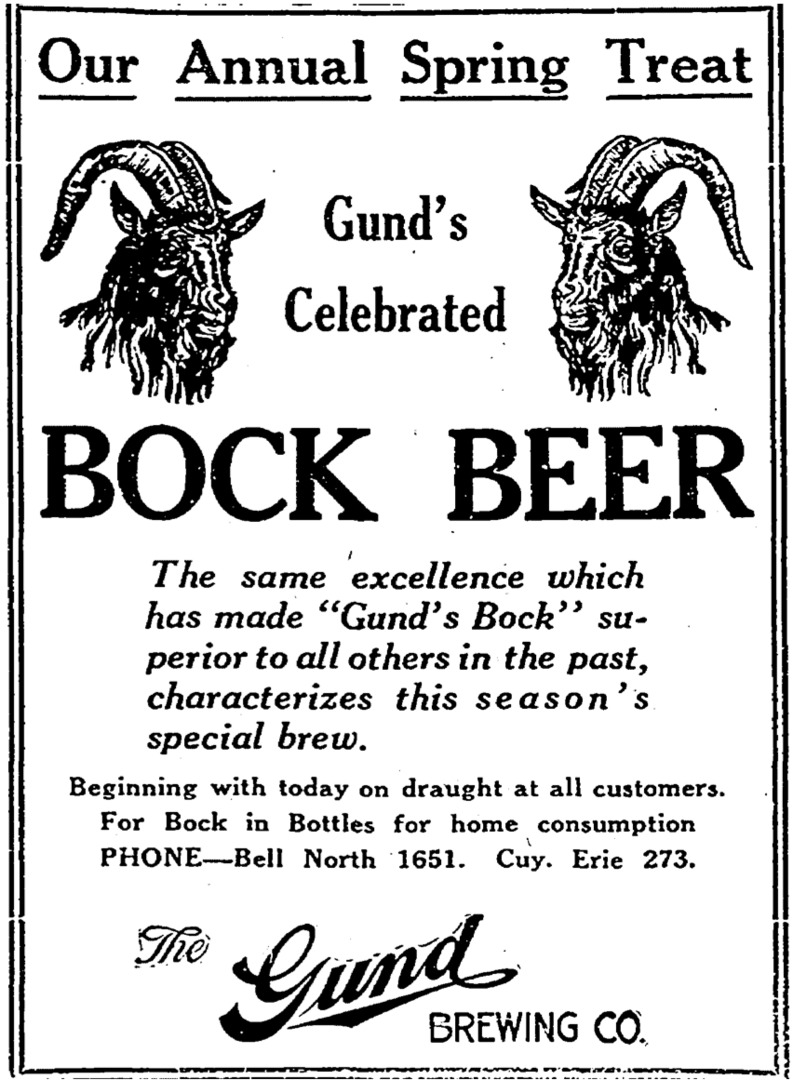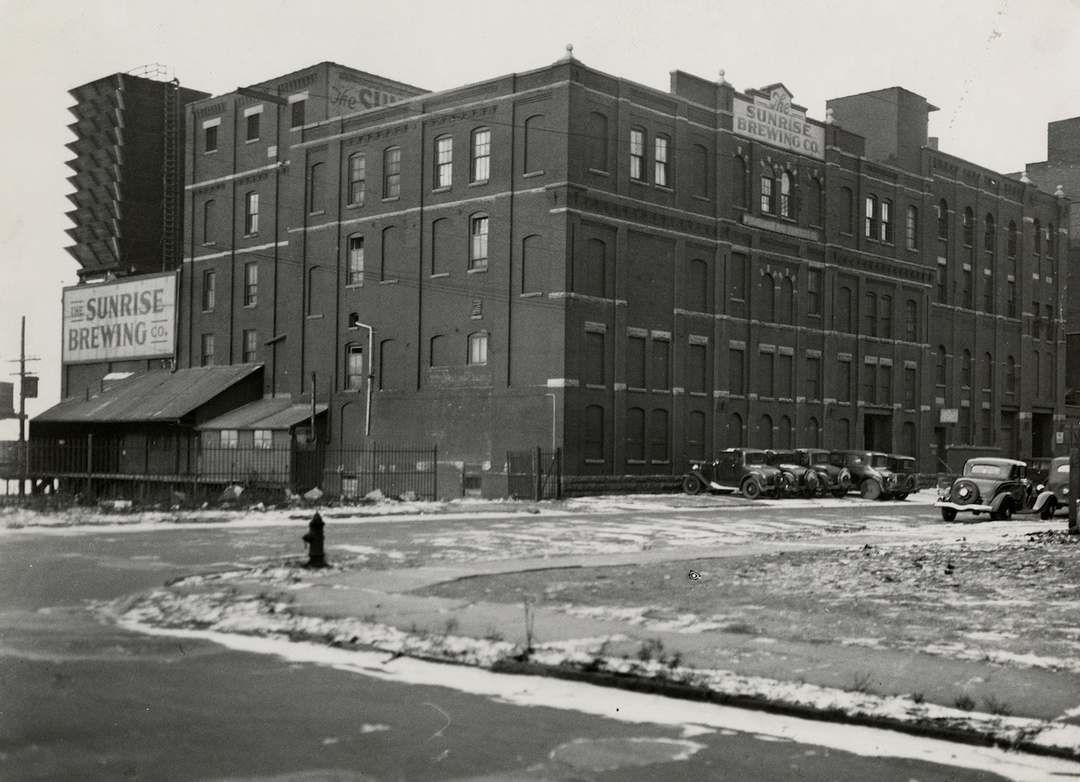
George Gund brought his business skills to Cleveland's competitive brewing industry in 1898. Through the years, his family prospered through their brewing, banking, and investments, creating a fortune that became a pillar of Cleveland philanthropy.
Brothers Martin and Michael Stumpf opened Cleveland’s first known brewery on Hamilton Street between Muirson (East 12th) and Canfield, just south of Lakeside Avenue. The proximity to rail service and ice from the winter lake made the area an ideal site for a brewery to supply local saloons (before bottled beer, local commercial distribution was the standard method of the times). During the next 15 years, the brothers split as partners but each continued brewing independently in the same near-east Hamilton Street neighborhood.
In 1859, Michael Stumpf sold his operation to the newly-organized Lyon Brewery, formed by Paul Kindsvater, a popular local saloonkeeper, and brewmaster Jacob Mall. By this time, Cleveland’s brewing industry was thriving. Like most breweries in the city, Lyon was operated by a German brewmaster. They produced the lagers preferred by Cleveland’s large Eastern European ethnic communities, replacing earlier common ales. The business and facility expanded rapidly and thrived into the 1890s as Mall’s leadership role was passed to his son-in-law. In 1896, in pursuit of greater production capacity, a new larger plant was built on Davenport Street. In the mid-1800s, Davenport Street connected Canfield Street (East 14th) with Briggs Street (East 22nd) along the edge of the downtown bluff— about 70 feet above the rail tracks along the Lake Erie shore. While local competition was fierce, growing demand generally meant there was enough business to go around. However, a new challenge was emerging as consolidated national brewers threatened local brewers’ market shares.
Meanwhile, George F. Gund (b. 1855) grew up in La Crosse, Wisconsin, where he later worked as a banker and with his father in the John Gund Brewing Company. George Gund relocated to Seattle in 1890, bought a local brewery, and expanded it. In 1897, he moved to Cleveland and purchased and renamed Jacob Mall’s Lyon Brewery to The Gund Brewing Company. Amidst all the competition, Gund refocused his business model on the individual consumer and away from the traditional saloon distribution. He built a bottling plant, upgraded working conditions and methods, and packaged three-bottle cardboard cartons in lots of eight to distribute to homes near and far. Gund’s Crystal Lager satisfied thirsty Clevelanders. The brewery continued to thrive into the 20th century under George F. Gund’s leadership while he cultivated other business interests in beverages, banking, mining, insurance, and real estate. Gund died in 1916, leaving his chair to his son, George F. Gund II.
George F. Gund II arrived in Cleveland from Seattle having finished Harvard Business School and a banking position. He personalized his arrival with Gund’s "Clevelander" beer, which sold for the next few years. In early 1919, Ohio enacted statewide prohibition rules and Gund ceased brewing beer and transferred his reserve inventory to the Pilsner Brewing Company of Cleveland to exhaust the inventory of Gund beer. During Prohibition, the Gund family refocused business away from brewing towards real estate management, banking, and various other business endeavors including decaffeinated coffee, later sold to the Kellogg Corporation and re-branded as Sanka. In the process, George F. Gund II became one of Cleveland’s foremost bankers as Chairman of the Cleveland Trust Company. His sons maintained the family’s Cleveland presence with philanthropic efforts (The Gund Foundation) and professional sports interests for the next century.
Gund Realty continued to own the Davenport property throughout the Prohibition years. The pre- and post-Prohibition eras also saw constant tensions within the industry between large national brewing conglomerates and smaller local operations in cities throughout the country. With the repeal of Prohibition came a rebirth of the local brewing industry. Gund Realty leased the Davenport facility to the Sunset (later Sunrise) Brewing Company. The new managers renovated and resumed the reliance upon bottled and canned beer with emphasis as a shipping brewer. More federal legal challenges forced another ownership change and product evolution. Sunrise emerged with its premier brand Tip Top Beer by the end of the decade. In 1939, Sunrise Brewing, still operating at the Davenport facility, was renamed Tip Top Brewing Company. More controversy ensued into the first half of the 1940s with rumors of the company’s connection to organized crime. By utilizing wartime rationing regulation loopholes, Tip Top Brewery added hard liquor sales to their beer business to gain market advantages in Cleveland saloons.
In 1944, Tip Top Brewing was sold to the Brewing Corporation of America (Carling Beer) and brewing operations ceased on Davenport Avenue. The building continued to be utilized as a beer and beverage warehousing and distributing facility for the next few decades. From the mid-1970s to the 2010s, the City of Cleveland and the Pennsylvania Railroad, along with several local banking and mortgage agencies and developers carried out property transfers, demolitions, and rezoning initiatives of the Davenport and neighboring properties as urban planning and development transformed the district.
The Davenport Avenue roadway was removed between East 14th and 16th Streets. The area once defined by Stumpf, Lyon, Gund, Sunrise, and finally Tip Top brewing operations is now occupied by Cleveland’s WKYC television studios and the Cleveland FBI headquarters building. The location that played a part in more than a century of the brewing industry’s evolution from a local to a global scale also marked the long arc of Gund family's business and family fortunes, which still resonate in Cleveland today.
Images











